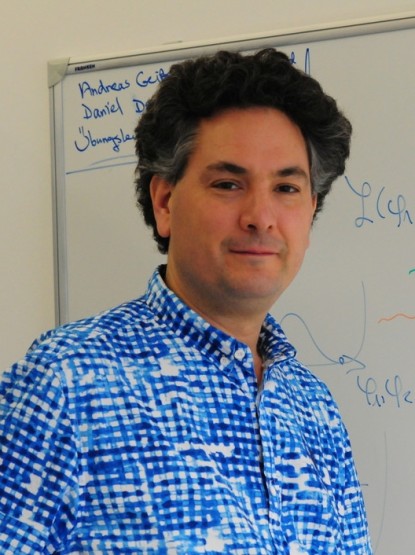Thermodynamic and Transport Properties of Hot and Dense Strong-Interaction Matter
Hot and dense strong-interaction matter can be described by fluid dynamics. In its simplest form, this means that stress-energy conservation ∂µT µν = 0 is supplemented with an assumed form for the stress tensor Tµν which allow these four laws to “close” and completely determine the evolution of the system. Defining the energy density and flow 4-velocity through uµTµν = euν, in its simplest form (ideal fluid dynamics) we set
Tµνideal = (e + P)uµuν + P gµν
which together with an equation of state P = P(e) completely determines the dynamics (four equations ∂µTµν in four unknowns e, ui). Realistically one must include non-idealities such as shear viscosity Txy = Txy,ideal − η(∂xuy + ∂yux) and bulk viscosity P → P − ζ∇iui . In the case that there are other conserved or nearly-conserved quantities, one needs additional transport coefficients; a diffusion coefficient matrix for charge, strangeness, and baryon number, and a “sphaleron rate” for the relaxation of an axial particle number abundance. These transport coefficients are essential in describing the non-equilibrium fluid dynamics and how fast disturbed strong-interaction matter relaxes back into equilibrium. Even in a state very near to equilibrium, e.g., in the intermediate stages of heavy-ion collisions, the non-equilibrium dynamics controlled by the transport coefficients are still essential for the system’s development. Furthermore, a medium’s effect on a high-energy penetrating probe can also be described by transverse broadening transport coefficients.
In the past, we have investigated transport coefficients at high temperatures and small or vanishing charge densities within (highly resummed) perturbation theory. One of our goals is to extend this work to large chemical potentials, relevant at intermediate-energy heavy-ion collisions and neutron star mergers. Our analytical methods will only be reliable at higher temperatures and densities than can be achieved, but they can be used as a starting point to extrapolate down to the physical point.
Another goal is to address the range of temperatures explored in high-energy heavy-ion collisions through truly nonperturbative techniques, such as lattice QCD. In collaboration with colleagues in Bielefeld (Olaf Kaczmarek’s group), we are exploring Euclidean lattice techniques to study the correlation functions which, when analytically continued, correspond through Kubo relations to the transport coefficients of interest (shear and bulk viscosity, topology change, heavy and light quark diffusion). One emphasis in our group is the better understanding of noise reduction techniques in these calculations. We are trying to understand analytically the nature of gradient flow and the optimal way to relate lattice gradient-flowed correlators to their continuum counterparts and to remove the effects of gradient flow via extrapolations, as well as to use gradient flow with fermions. We are also investigating other innovative noise-reduction techniques on the lattice.
We are also interested in nonstandard or exotic transport coefficients. One of these is the rate of real/Minkowski-time change of the system’s topology (the strong-sphaleron rate). The topological structure of QCD is important because of the Adler–Bell–Jackiw anomaly (axial anomaly) ∂µJµA ∝ εµναβtr(GµνGαβ) with Gαβ the gluonic field strength. The right-hand side is proportional to the winding number of processes which change the Chern-Simons number; these couple with opposite sense to left- and right-handed quarks, violating the axial quark number which would otherwise be conserved for light species up to small quark-mass effects. This rate is not simply related to (Euclidean) topological susceptibility; in particular, it increases with rising temperature, while topological susceptibility shrinks. Violation of axial quark number plays an important role in the formation and equilibration of axial imbalances and possibly in the response to magnetic fields and/or to vorticity. We are also interested in investigating the thermodynamical response of the QCD medium to vorticity and any other vorticial effects which can be ascertained on the lattice.
The results of our research will further the understanding of all non-equilibrium states of hot and dense strong-interaction matter, with the quark-gluon plasma produced in heavy-ion collisions as the paragon. It is close to equilibrium locally, but very far from it globally, and allows for the experimental validation of phenomena assumed to occur in neutron star mergers or the early universe


